More great mountain biking from the Cascade Mountains thanks to the good weather and long summer days. There hasn’t been any rain which will lead to dry and dusty conditions soon if there is no precipitation. The hot, dry conditions also increase the risk of fire danger.
Fire is not the only danger in this remote area of the Cascade Mountains. This area is known for high winds, but high wind is not always the cause of fallen trees. Trees also die from disease and insect damage. Either way, plenty of trees in the mountains fall down. This tree fell across one of the main Forest Service roads in the area.
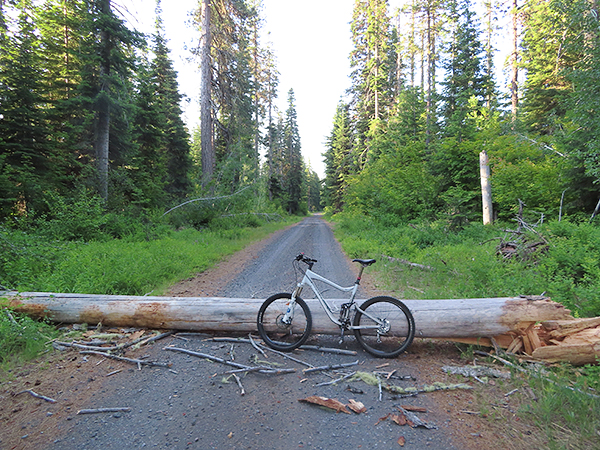
Today was a beautiful day in the Cascades so we set out to see how far we could go. We’ve been doing a lot of riding so we are in decent shape, but I’m not getting any better as I get older. Most people my age can barely get off the couch so I can’t complain all that much. With Mt. Adams in the distance, we head up the Forest Service road.
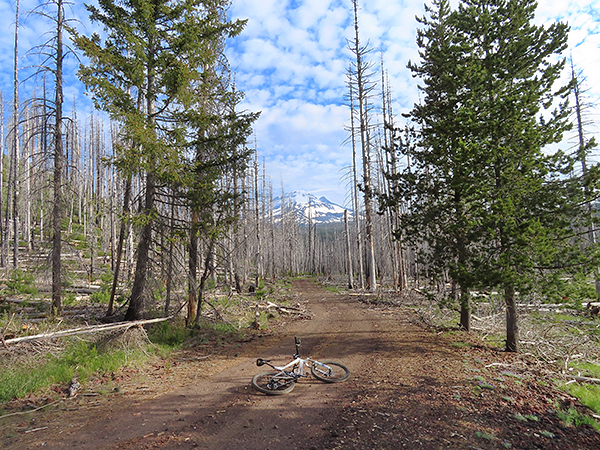
Higher up, there are large areas of forest burned in forest fires. In a remote area like this, wildfires can burn for weeks and devastate huge chunks of forest.
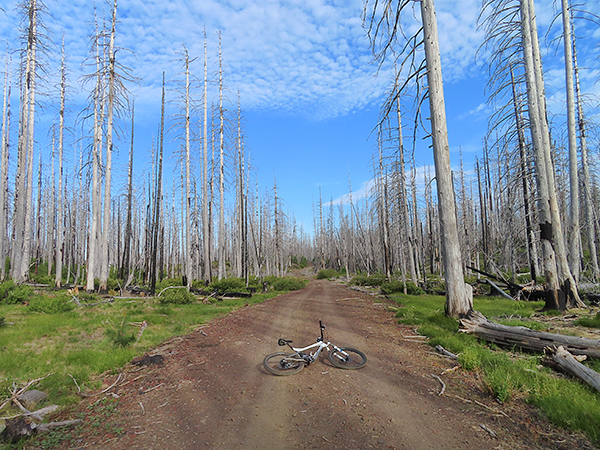
When a forest is completely burned, it takes a long time, if ever, to regenerate. When all the trees are dead, the underbrush and grass grows out of control. Any young trees compete with the underbrush to survive. The trees grow fairly quickly, but odds of survival are lower. The odds are pretty good that sooner or later there will be another fire. Fueled by an abnormal amount of underbrush, the young trees cannot survive the fire.
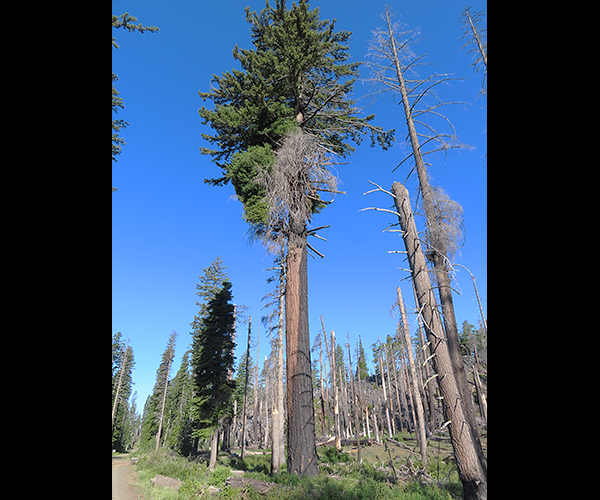
In the photo above, a large tree was able to survive fire, which is a natural occurrence, while the younger trees were too small and were burned. The flames from the fire were at least forty or fifty feet high. That’s a big fire. The thick bark of the older tree protected it from fire. In the photo below, the tree bark is burned but not destroyed and the tree survives.
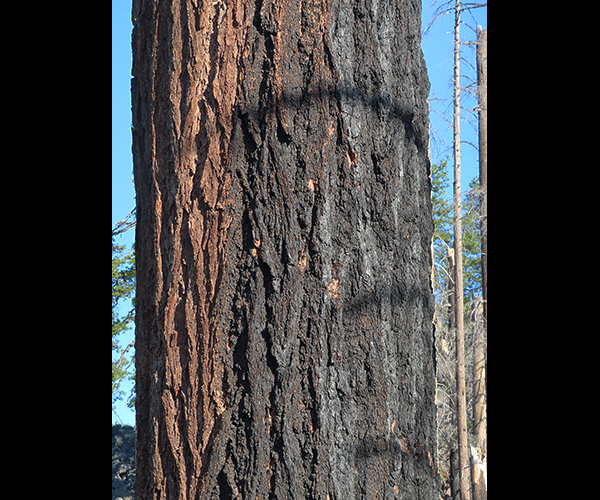
We rode about as far as we could and took a short break at the edge of a burn area. With no trees blocking the view, Mt. Adams can be seen in the distance.
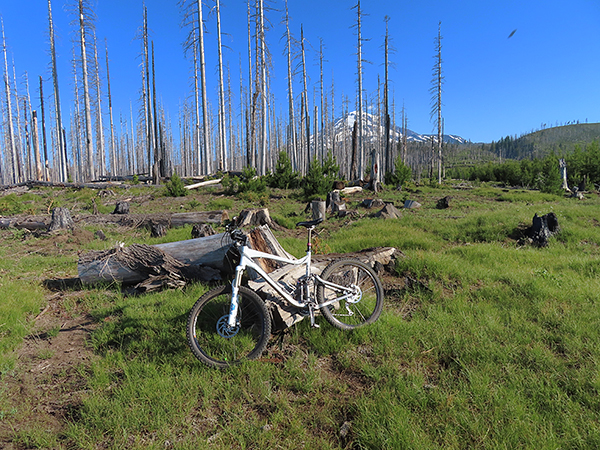
Another ride takes us to the other side of the mountain. We stopped at a seasonal water crossing, that at one point, was too fast and deep to cross. This day, it was barely a trickle and a few days later it was completely dry. All the winter snow has melted off this part of the mountains.
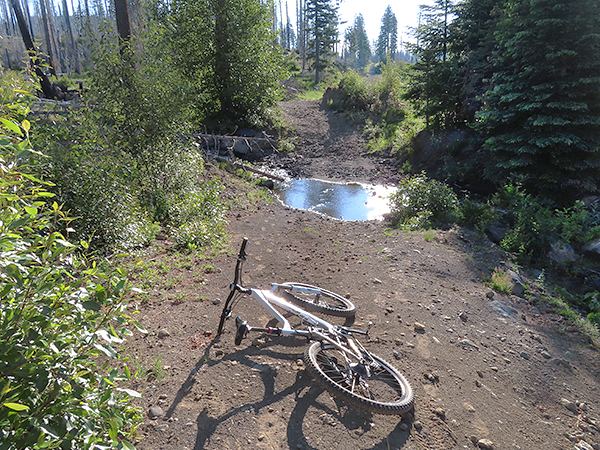
This route takes major Forest Service roads all the way up and less improved roads and some trails on the way back down. With the nice weather and long days, we are riding by 0630 or 0700. Mornings are cool, wildlife is active and it’s usually calm and quiet. Shadows are long as the sun filters through the dense forest.
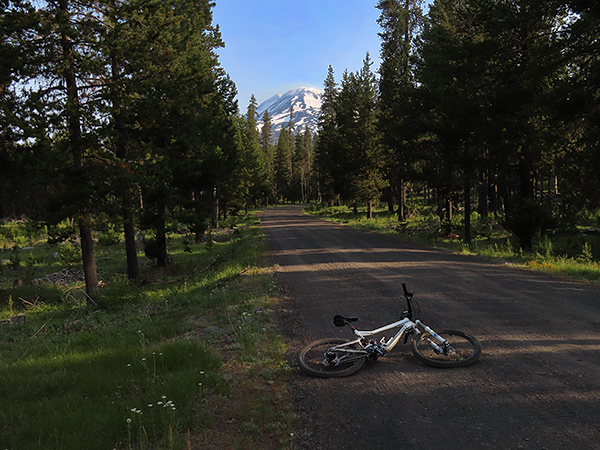
At the tree line, it was already dry and dusty. This area has been logged and burned, so there’s not much here. Some of the heartier conifers have taken hold so there may be trees here again a hundred or so years from now. Until then, there is a great view of Mt. Adams.

As you can see, there’s not much snow left on the black lava rock mountain. From here until winter, it’s glaciers melting. This happens earlier every year and the Mt Adams glaciers aren’t all that big.
The next morning, the sun was red and the skies were hazy. These days, that means fire. I checked online, which I could barely do because the already slow internet was nearly dead from bandwidth exhaust, and found there was a serious fire nearby.
We went out for one more ride. We were about ready to head into town anyway and were worried that the fire would close roads that would make it tough to get around. It wasn’t too smoky this morning, but the fire was growing. A quick look at a hazy Mt. Adams and a quick ride to end another good stretch of mountain bike riding.
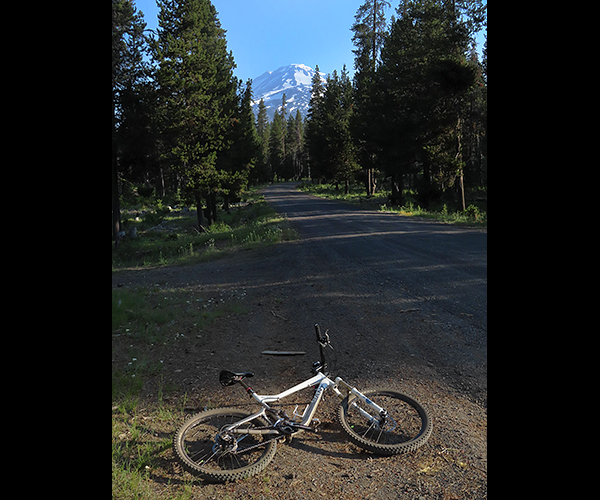
The fire burned over five hundred acres, closed a main state highway, caused evacuations in two counties and is still smoldering a week after it started. We headed into town to resupply and get the emergency gear, namely the ham radio stuff, ready to go. I may have more on the off-grid communications setup after more field testing. That, and more mountain biking from the Cascade Mountains, so check back soon.
